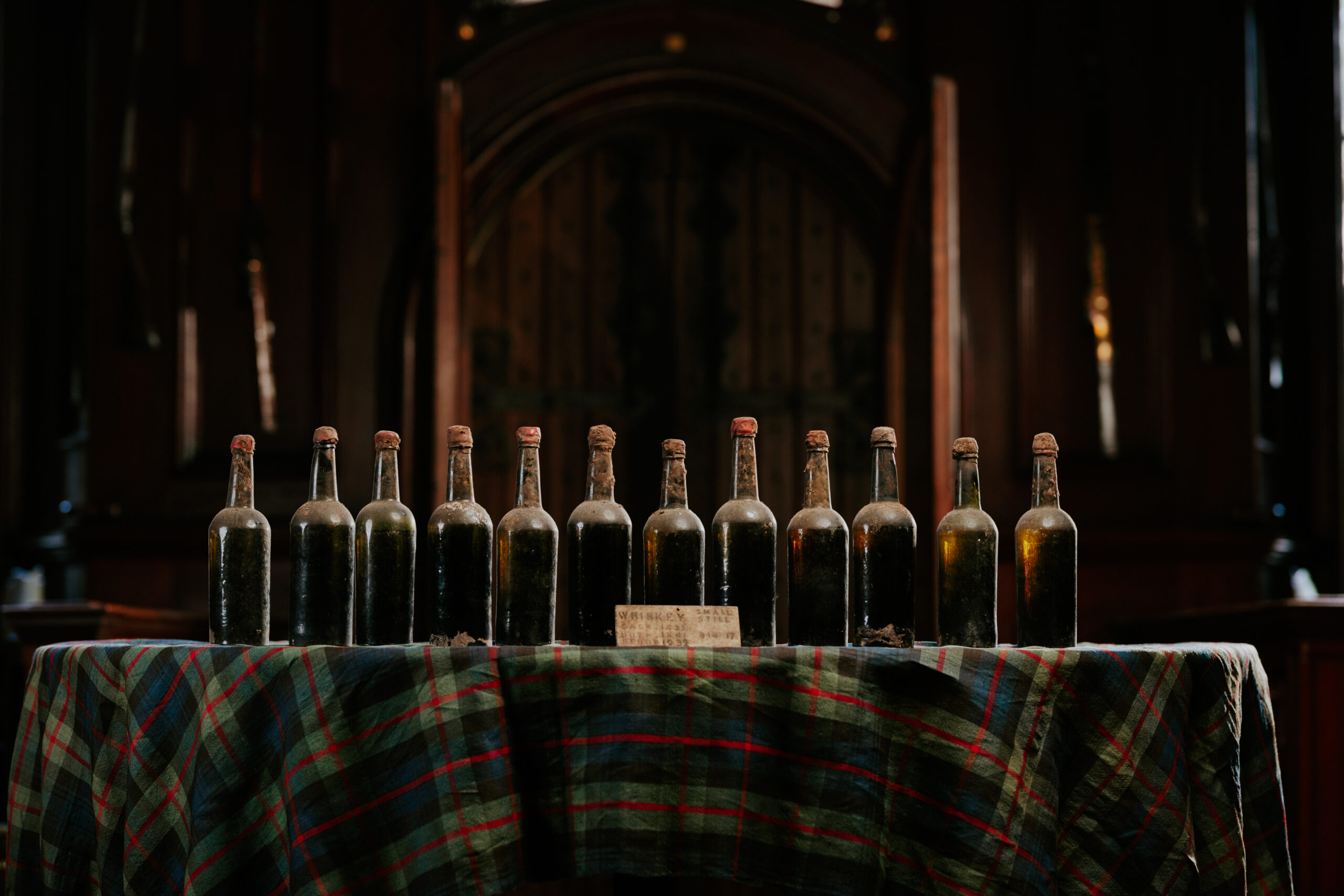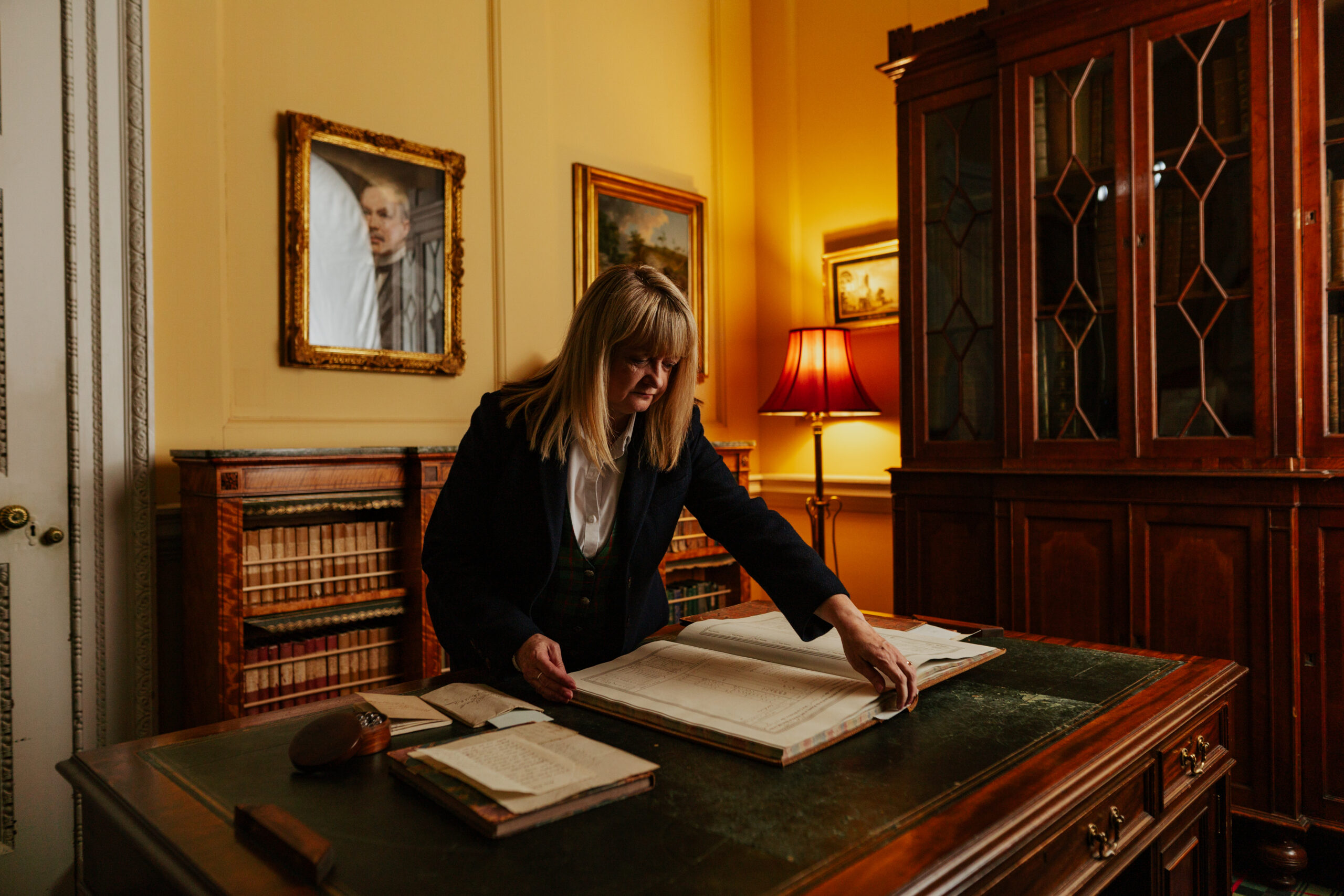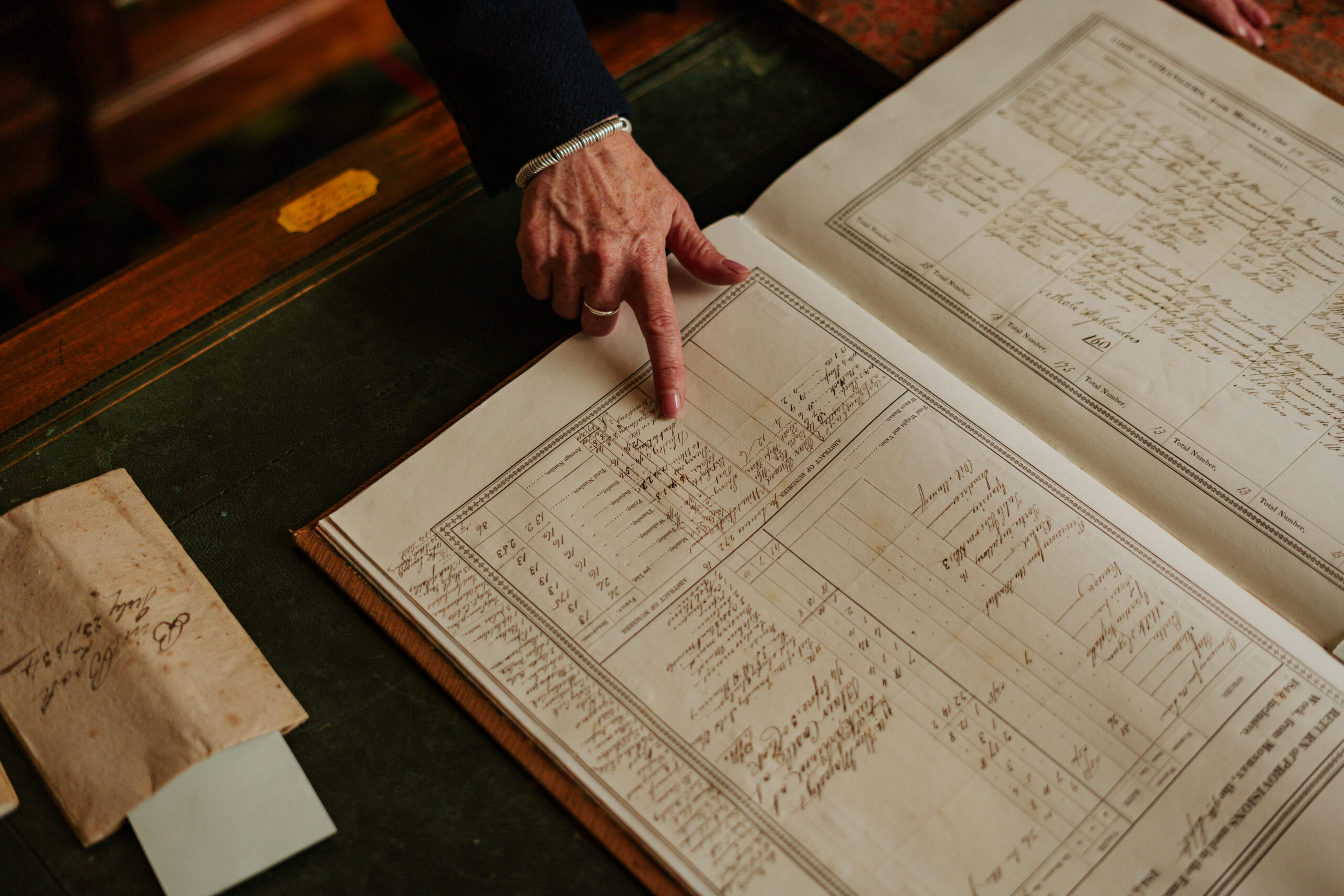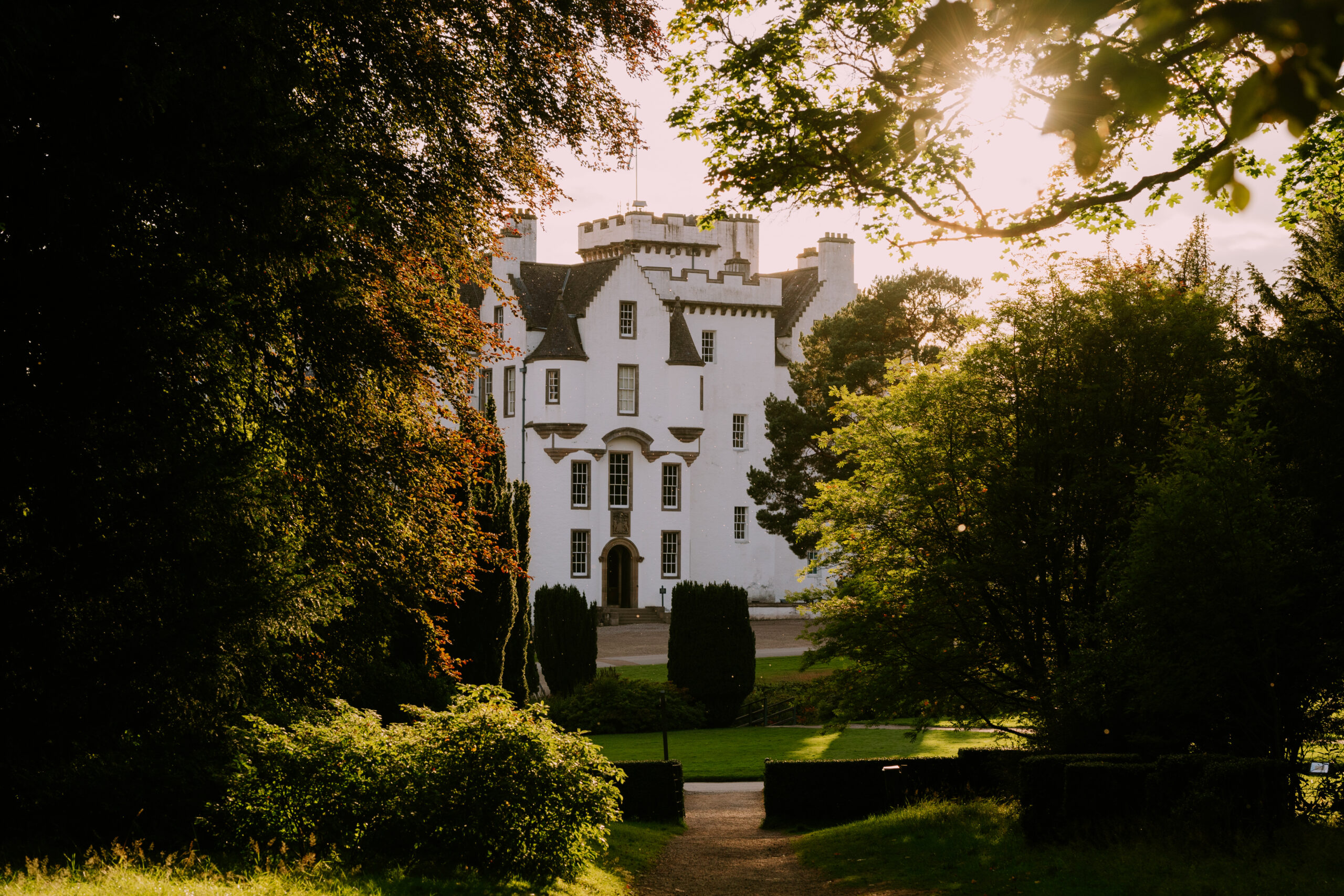
World’s oldest whisky discovered in the cellar of a Scottish castle
The world’s oldest whisky has been discovered in the cellar of a Scottish castle – nearly 200 years after it was distilled.
Around 40 bottles of the whisky, which was distilled in 1833 and bottled in 1841, were found behind a hidden cellar door in Blair Castle in Perthshire.
Bertie Troughton, resident trustee at Blair Castle, discovered the whisky at the back of a shelf in the 750-year-old castle.
Now, 24 of the bottles are set to be sold by Perth based Whisky Auctioneer in November. The bottles are estimated to fetch £10,000 each.
And experts the Scotch could have been sipped by a young Queen Victoria.
While Queen Victoria may be best known for her association with Balmoral Castle, she also had strong connections to Blair Castle and a close friendship with the 6th Duchess of Atholl.
In 1844, Queen Victoria and her consort, Prince Albert visited and stayed at Blair Castle. During her three-week stay, the Blair Castle Household Book lists that Whisky was consumed during her visit.

The whisky is thought to be the oldest in the world.
Local newspapers at the time reported Queen Victoria’s liking for Atholl Brose – a local drink of whisky with honey.
It’s therefore highly likely that this same whisky was the whisky that was shared between Queen Victoria and Prince Albert during their stay.
Experts authenticated its 19th century origin through archives of Blair Castle and Atholl Estates.
The Scottish Universities Environmental Research Centre also carried out carbon dating to source its origins.
‘Blair Castle is fortunate to have one of the best archives of any historic house in Scotland and it’s been wonderful to see the story of these fabulous bottles come to life in the archives,’ said Bertie.
‘Whisky has always been a huge part of the history of Blair Castle and we will be building an exhibition around the bottles we keep after the auction so that all who visit Blair Castle can see it and hear the history of this incredible whisky.’

Keren Guthrie, Archivist, Blair Castle and Atholl Estate and Archives.

The bottles were initially sampled by the family and a local whisky expert before Whisky Auctioneer was contacted.
‘Offering the world’s oldest scotch whisky at auction is truly a once in a lifetime occurrence,’ said Joe Wilson, spirits specialist at Whisky Auctioneer
‘I’m fortunate to be well acquainted with old and rare liquid, as Whisky Auctioneer handles some of the world’s rarest whisky bottlings.
‘This, however, is a transcendent discovery that is sure to capture not just the imagination of the whisky industry but also those well beyond.
‘Distilled in the 1830s, the whisky was made during a fascinating period when whisky production was experiencing massive change following the 1823 Excise Act, making it a particularly exciting find for those interested in the history and heritage of the Scotch whisky industry.’
Angus MacRaild, Old and Rare Whisky specialist and co-founder of Kythe Distillery, said: ‘This is a profoundly historic whisky and a remarkable artefact of Scottish distilling that is unlikely to ever be equalled in terms of provenance and preservation.

Blair Castle.
‘That it has been carefully re-bottled and preserved at natural strength, maintaining the freshness and power of this spirit for nearly two centuries is frankly, astonishing.
‘To taste it myself, has been a great privilege.
‘It is very much a distillate driven malt whisky, with minimal wood influence and one of a style which could have been produced any time in Scotland up until the 1950s.
‘What I find most interesting is that this profile existed already as far back as the 1830s.
‘It possesses clear textural weight in the mouth, along with a flavour profile that strongly involves medicinal characteristics without any notable or pronounced peat smoke.
‘Not only do I find it historically fascinating, but a pleasurable and hugely charismatic whisky that I find quite typical of older style, distillate-forward highland malt whiskies.’
The archives included cellar inventories known as ‘bin books’.
One such bin book, dated July 23rd 1834 – one year after the whisky was initially casked – shows whisky recorded in the cellar safely in its cask.
It specifically references ‘Bin 65 – Store Whiskey – 72 bottles = 40 Gallons in wood’. This is one of the earliest known references to whisky maturing in wood.
The bottles will be sold through Whisky Auctioneer from 24 November to 4 December.
Read more news and reviews on Scottish Field’s food and drink pages, in association with Cask & Still magazine.
Don’t miss the October issue of Scottish Field magazine.
TAGS

